I'm trying to make a custom message box with my controls.
public static partial class Msg : Form
{
public static void show(string content, string description)
{
}
}
Actually I need to place some controls (a gridview) in this form and I have to apply my own theme for this window, so I don't want to use MessageBox. I want to call this from my other forms like
Msg.show(parameters);
I don't wish to create an object for this form.
I know I can't inherit from Form class because it isn't static. But I wonder how MessageBox is implemented, because it is static. It is being called like MessageBox.show("Some message!");
Now I'm getting an error because inheritance is not allowed:
Static class 'MyFormName' cannot derive from type 'System.Windows.Forms.Form'. Static classes must derive from object

How MessageBox is implemented then?